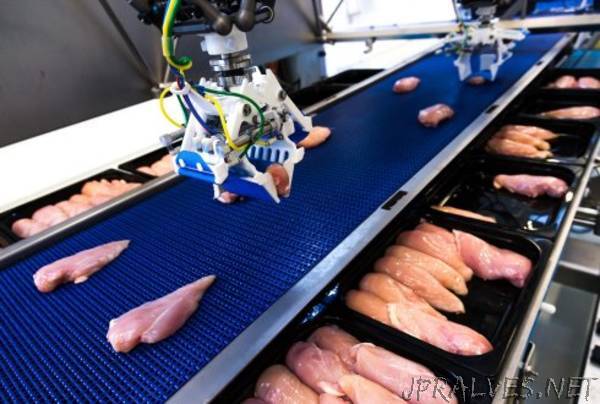
“Robots that automatically harvest tomatoes or package biscuits in boxes of various sizes are now becoming a reality: Wageningen University & Research will be working together with various partners to develop flexible robotics for food production as part of the new and comprehensive FlexCRAFT research programme. The board of the Domain Applied and Engineering Sciences of the The Netherlands Organisation for Scientific Research (NWO) has made 2.7 million euros available for this research to which another 1.3 million euros has been added by the corporate sector.
‘Food production has to be as hygienic, efficient and sustainable as possible,’ explains head of the programme Eldert van Henten. ‘Moreover, fewer people are willing to do boring and heavy work in warm, humid greenhouses or cooled processing facilities in which products such as chicken are processed. Robots can provide a solution, as they never tire and function well at low temperatures. However, they do need to be able to handle the substantial variation in shape, size and hardness of different food products. That is still difficult to realise at present.’
New technology for robotics
The FlexCRAFT programme is developing new robotics for the automated harvesting of tomatoes, the processing and packaging of chicken products and the packaging of bags of crisps and boxes of biscuits into boxes of different sizes. ‘We are developing generic skills for robots which enables them to perform operations on agri-food products that differ in shape, size and hardness. One of these skills is actively detecting objects in complex environments in which the target object is partially hidden. These are things such as the peduncles of fruits which are not always visible.’ The sensors collect information which is recorded in a world model together with all known domain knowledge in a similar way that people gather and remember knowledge and experience.
Complex environment
The movements of the robotic arm are then planned based on this sensor information and the world model. ‘Grasping a vine of tomatoes of which the stem end is partially hidden requires the fast and effective generation of movements in a complex environment. This is easy for people to do, but still remains a tough challenge for a robot. Robots also still require extensive development when it comes to grasping objects of different shapes, sizes and degrees of hardness.’ The researchers will test the generic character of the robotics skills to be developed in in use-cases in greenhouse horticulture, food processing and food packaging.
Sustainable cultivation systems
The Netherlands is the second-largest exporter of agri-food products and the third-largest supplier of technology for the agri-food sector. ‘We expect to make significant headway in cognitive robotics in the next four years, which will benefit robotics in the agricultural sector in the broadest possible sense. The technologies that are yet to be developed are also necessary for the use of robotics in new, more sustainable cultivation systems such as mixed crops in arable farming. This programme strengthens the competitive position of the Netherlands in the agri-food sector.’”
